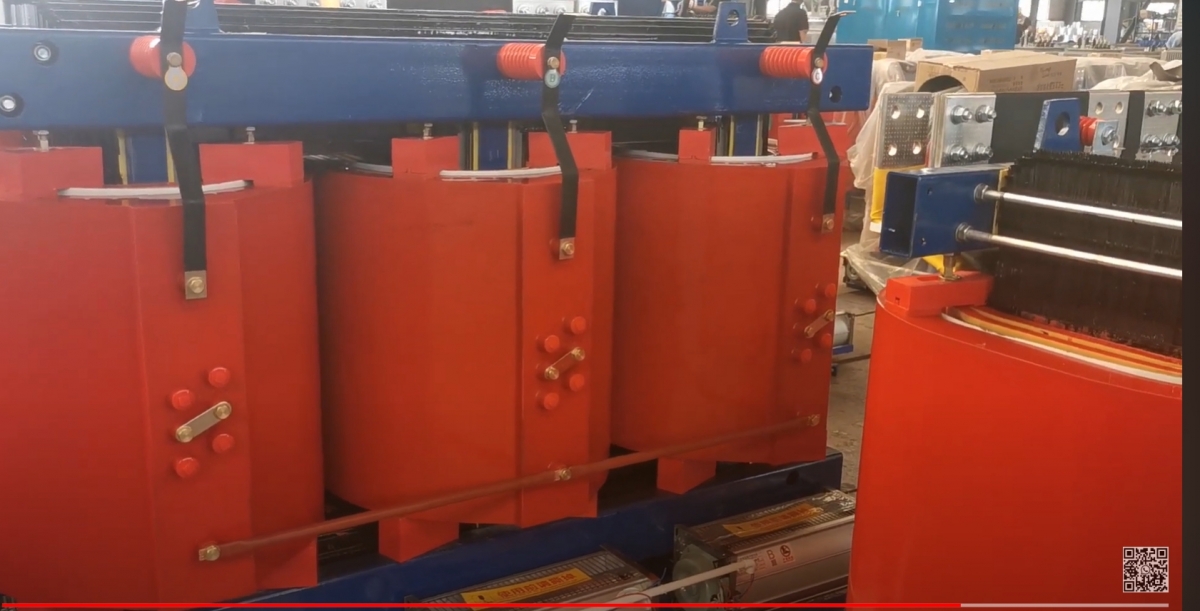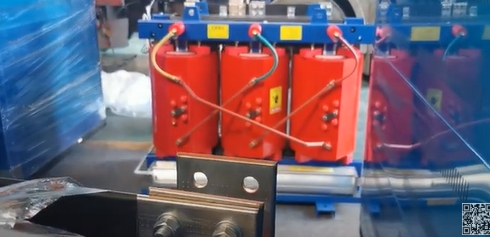- 22
- 10月
Analysis of several causes of loud on-site dry transformer noise, and the transformer factory SPL provides you with solutions
Transformer noise is an inherent characteristic of the transformer during operation. Each product has undergone strict sound level measurements in strict accordance with relevant national standards before leaving the factory. However, with the improvement of users’ environmental awareness, it reflects that the on-site noise of the transformer is biased. Major complaints have also gradually increased, and the reflected noise is often much larger than the factory test data. According to some on-site processing experience, the following reasons are analyzed for reference:
1. Voltage problem
Reason: High voltage will overexcite the transformer core and make the sound louder and sharper, which will directly seriously affect the noise of the transformer.
Judgment method: Look at the low-voltage output voltage. First, look at the voltmeter on the low-voltage cabinet. You can also use a multimeter to directly measure and compare.
Solution: The current 10KV voltage is generally high. According to the low-voltage side output voltage, the tap gear should be placed in a suitable gear at this time. On the premise of ensuring the quality of low-voltage power supply, try to adjust the high-voltage tap upward (lower-voltage output voltage decreases) to eliminate the over-excitation phenomenon of the transformer and reduce the noise of the transformer. Remember: gear adjustment must be performed by professionals.
2. Resonance problems of fans, wiring rods, casings, and other parts
Reason: The resonance of the fan, casing, and other parts will produce noise, which is generally mistaken for the noise of the transformer.
Judgment method:
1) Shell: Press the aluminum plate (or steel plate, stainless steel plate) of the shell with your hand to see if the noise changes. If it changes, it means the shell has resonance.

2) Fan: Start the fan manually and see if the noise changes. If it changes, it means the fan is resonating.
3) Other components (such as wiring rods, fan brackets): You can use a dry long wooden stick to push them to see if the noise changes. If there is a change, it means that the components are resonating.
Solution:
1) Check whether the aluminum plate (or steel plate or stainless steel plate) of the shell is loose and may be deformed during installation. You need to tighten the screws of the shell, fix the aluminum plate of the shell, and correct the deformed part.
2) Check whether the fan is loose. You need to tighten the fastening bolts of the fan and put a small piece of rubber between the fan and the fan bracket to solve the problem of fan vibration.
3) If the transformer parts are loose, they need to be fixed.
3. Installation problems
Reason: Improper installation will aggravate the vibration of the transformer and amplify the noise of the transformer.
Judgment method:
1) The foundation of the transformer is not firm or flat, or the bottom panels are vibrating.
2) Using channel steel to set up the transformer will increase noise.

Solution:
1) The installation unit shall modify the original installation method.
2) A shock-isolating rubber pad can be added under the transformer to solve some of the noise.
4. Influence of installation environment
Reason: The operating environment affects the noise of the transformer, and the unfavorable environment increases the noise of the transformer.
Judgment method:
1) The transformer is too close to the wall, less than 1 meter. The transformer is placed at the corner, and the reflected noise from the wall superimposes with the transformer noise, increasing the noise.
Solution: Some sound-absorbing materials can be appropriately installed indoors.
5. The problem of busbar bridge vibration
Reason: When the load is high, a large current flows through the busbar, and the leakage magnetic field causes the busbar to vibrate. The vibration of the busbar bridge will seriously affect the noise of the transformer, making the noise of the transformer larger and more difficult to judge. Generally, users and installation units will mistake it for the noise of the transformer.
Judgment method:
1) The noise changes with the load size.
2) Use a wooden stick to push the busbar bridge. If the noise changes, it is considered that the busbar bridge is resonating.
3) If the busbar vibrates in the bridge, you may need to wait for a power outage to open the busbar bridge cover and check whether the busbar is fixed properly.
Solution:
1) Mainly to destroy the resonance conditions of the busbar bridge, tighten or loosen the suspender screws.
2) Open the busbar bridge cover and secure the busbar.
3) The low-voltage outlet line adopts soft connection.
4) Ask the busbar bridge manufacturer to solve the problem.
6. Problems with load properties
Reason: The voltage waveform of the transformer is distorted (such as resonance phenomenon), causing noise,
Judgment method:
1) In addition to the noise of the transformer itself, the noise is also mixed with “gurgle” noise.
2) During operation, the transformer noise will suddenly increase sharply, and then return to normal soon.
3) Check whether there is rectifier equipment and frequency conversion equipment in the load.
Solution:
On the one hand, users are asked to test the harmonic content and recommend installing a harmonic elimination device. In addition, it should be noted that even if a harmonic elimination device is installed, abnormal noise may still be generated. The reason may be incomplete elimination.
7. The problem of transformer phase loss
Reason: The transformer cannot be excited normally and produces noise.
Solution:
1) The transformer is out of power, check whether the power supply is missing one phase.
2) Check whether the high voltage fuse of the transformer is blown in one phase.
8. Problems with poor contact
Reasons: First, it is caused by poor contact in the high-voltage cabinet. The second is that the knife switch is not closed in place, or the high-voltage current transformer is discharged.
Judgment method: The transformer makes intermittent and abnormal noise.
Solution:
1) Check the contacts and fuses of the high-voltage cabinet and the entire high-voltage circuit.
2) Ask someone from the high-voltage cabinet manufacturer to check.
9. The problem of floating potential
Reason: The clamping channel steel, pressure nail bolts, pull plates and other parts of the transformer are all spray-painted. The contact between the parts is not good. Under the action of the leakage magnetic field, floating potential discharge will occur between the parts and make noise. . Or there are pressure nail bolts that have become loose over time and discharged to the metal substrate.
Judgment method: Suspension potential discharge makes a very slight “squeak, squeak” sound, which can only be heard if you listen carefully. Users often mistakenly think that the transformer is discharging high or low voltage.
Solution:
1) This discharge will not affect the normal operation of the transformer.
2) During power outage and maintenance, the paint can be scraped off the areas with poor contact to ensure good contact between the various parts of the transformer, or the locations where loosening due to insufficient fastening can cause suspended discharge can be tightened.
10. When the low-voltage line is grounded or short-circuited, or when a large load is put in
When a low-voltage line is grounded or a short-circuit accident occurs, the transformer will also make a roaring sound; the closer the short-circuit point is to the transformer, the more obvious the sound will be.
